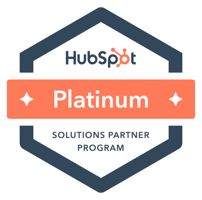The question is, how can you be sure that your sales enablement process is working? What effect is it actually having on your reps? Measuring sales enablement success can be tricky, but it's not impossible. Here are 4 suggestions that can help.

How to Measure Your Sales Enablement Success
1. Use the Customer Conversion Rate as Your #1 Metric.
The ultimate goal of any sales enablement program is to help your sales team close more deals — i.e., turn more leads into paying customers. There is a lot of intermediate steps on the road to that destination. However, it's important to keep your eyes focused on the big picture.
With that in mind, use your customer conversion rate as the main benchmark for your sales enablement efforts. If your sales enablement strategy is working, then you should see a positive change in this metric over time. If you keep a close eye on this measurement, you'll also be able to spot key trends within your sales team's performance — whether good or bad — and then make any needed adjustments.
Finally, keeping this metric firmly fixed in your mind will help you to determine where to focus future marketing efforts. If a proposed campaign isn't going to help you close more deals, then you probably need to allocate your resources elsewhere.
2. Compare Your Team's Performance to the Competition.
This type of measurement in particular can provide some powerful insight into how effective your sales enablement process actually is, in the real world. For example, how does your team's win/loss rate look when they are negotiating deals in direct competition with another company? Are they closing more sales than they're losing? If not, why not?
The great thing about win/loss rate is that you can track it across every measurable stage of the deal — and if you do, you'll be able to see exactly where your prospects are falling off and can start exploring options to mitigate those losses.
3. Leverage Attribution Reporting for Online Content.
If you want to track the performance of your sales enablement content, you have to post it online and publicize it to the greatest extent possible. Once it's out there for public consumption, you'll be able to look at click-through rates from your blog, social media posts, and prospecting emails, among other channels. That's a relatively simple but telling way to determine which pieces of content are performing well, and which ones need to be revised or replaced.
Moreover, you can run attribution reports to see which pieces of content had the greatest influence on your lead-to-customer conversion rate. Was it a case study you published that really resonated with your B2B audience? Was it an engaging post on social media with a strong click-through rate? Or was it an article you published as a guest on a separate website? Whatever the case may be, you want to know which pieces are your top performers, so that you can produce more of the same.
4. Measure the Effectiveness of Your Onboarding and Training Program.
Training and development are a huge part of sales enablement. After all, your sales department can have the most advanced tools and technologies in the world — but if your sales reps (you know, the people who are actually selling your product) aren't buying into your sales enablement strategy, or don't have the skills to keep up with your platform's capabilities, you'll never see great results.
For that reason, it's absolutely vital that you keep a pulse on your onboarding and training program's effectiveness. Here are 4 levels of assessment that you'll need to work through in order to get a complete picture:

Reaction
When it comes to onboarding and training, this is the first and most qualitative level of assessment. Basically, you want to know: Do your sales reps like the training they receive? Do they find it helpful? Are you using the right people as facilitators? If you want to put a quantitative spin on this stage (i.e., collect hard data instead of subjective opinions), then ask your sales team to fill out an NPS survey.
Learning
At this level, you want to know how much of the onboarding and training material was actually absorbed by your reps. Metrics that you can use to determine the amount of learning achieved may include:
- How many pieces of content were viewed by your sales team
- Programs/training modules that were launched
- How many programs/training modules were completed
Behavior
Once your reps have learned new skills and techniques, you want them to internalize those concepts to the point that their behavior changes, and they become more effective at selling to prospects. Data points that you could use as a gauge for these behavioral changes include:
- The number of certifications earned
- The number of practice calls or role-playing sessions recorded
- Number of coaching activities implemented
Results
This final level of assessment is all about the bottom line. In other words, what effect did your onboarding and training program have on the business, in concrete terms? Here, you're mainly looking at metrics like revenue growth, the numbers of leads generated, and (again) your customer conversion rate. Here are some other productivity metrics you may want to use:
- Time to first activity (call, meeting, or demo)
- Time to first deal
- The time to 50% quota
- The time to full quota
Conclusion
Take advantage of our free Hubspot CRM Configuration to start modernizing your sales process. This is a limited-time offer where we will design a sales pipeline specifically for your business. Start generating more revenue and improve your close rates by building your first high-performing sales pipeline on HubSpot at no cost. Simply schedule a discovery session with our team of HubSpot experts.
In summary, sales enablement success isn't always the easiest thing to measure. Still, it's important to know how well your company is doing in this regard. If your sales enablement process is firing on all cylinders, then you're sure to experience sustainable growth for some time to come. If you have any questions about measuring sales enablement success, reach out to our team of experts at OverGo Studio today for a free consultation.


